What Does OL Mean on a Multimeter?
Today, digital multimeters are more popular than their analog counterparts for a clear reason.
They are easier to use, and this is owed to the numerical readings that make testing electrical components more straightforward and accurate.
However, if you’re new to using a multimeter, you are sure to be a little confused when you come across “OL” on the multimeter screen. “OL” means a lot of different things with different multimeter modes.
Our article is a guide on every meaning “OL” may have and we provide you with extra tips on what to do when you encounter this unfamiliar term.
Let’s get right in.
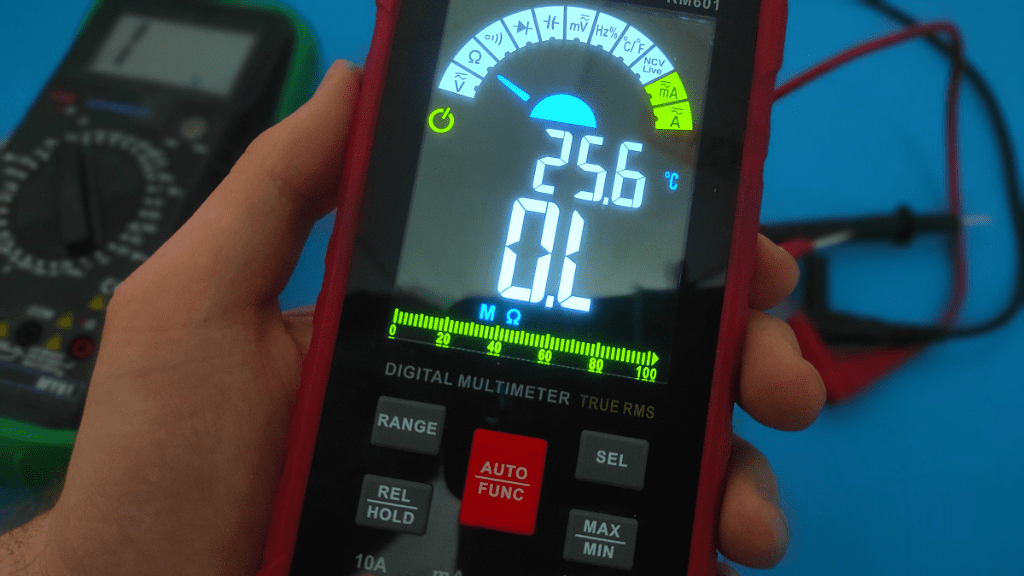
What Does OL Mean on a Multimeter?
OL means Overload on the multimeter when testing for voltage and resistance. In these cases, it means that the multimeter limit is too low for the electronic property being measured. If you are testing for continuity, OL means Open Loop, meaning there is a break in the circuit.
There is a whole lot more to these interpretations and we will go in-depth into each.
First, however, it is important for you to understand the basics of the different multimeter modes that may present you with “OL.”
Using Multimeter Modes and Understanding OL Readings
With the multimeter, you expect the “OL” reading when measuring three properties, which are the voltage, continuity, and resistance within a circuit.
The University of Washington offers us the water/hose analogy, which is the best for understanding these relevant electrical properties.
According to the Water/Hose analogy,
- Current flows through a circuit as water flows through a pipe
- Volt is the speed of current, just like the pressure of water in a pipe
- Continuity is the ability of current to flow from one point to another, which is the same as the ability of water to flow from one end of the pipe to the other end.
- Resistance is the opposition to the free flow of current within a circuit. In the analogy, it relates to any blockage that prevents the flow of water in a pipe
The “OL” reading has different implications when measuring each of these electrical properties. What are these implications?
1. Voltage
As noted before, volt is the electrical potential or pressure of current between two points within a circuit.
Using the Voltage Mode
When measuring volt with the use of a multimeter, there are different ranges you may set the dial to, depending on the amount of volt you wish to test.
You also set the dial to the closest higher volt range.
For instance, when measuring a low volt like 1V within a circuit, you set the multimeter dial to the 2-volt limit.
When measuring high volt, like 400V, you set the dial to the 600V limit for accuracy.
What OL Means When Testing Voltage
If the meter screen displays “OL”, then there is more voltage than the limit the multimeter is set to test (overload).
This is the same when testing high and low currents, and the meter may also display “1” in some cases.
For the 2V range, for example, if the volt you measure within the circuit is more than 2 volts, the meter will display OL or 1, signifying an overload.
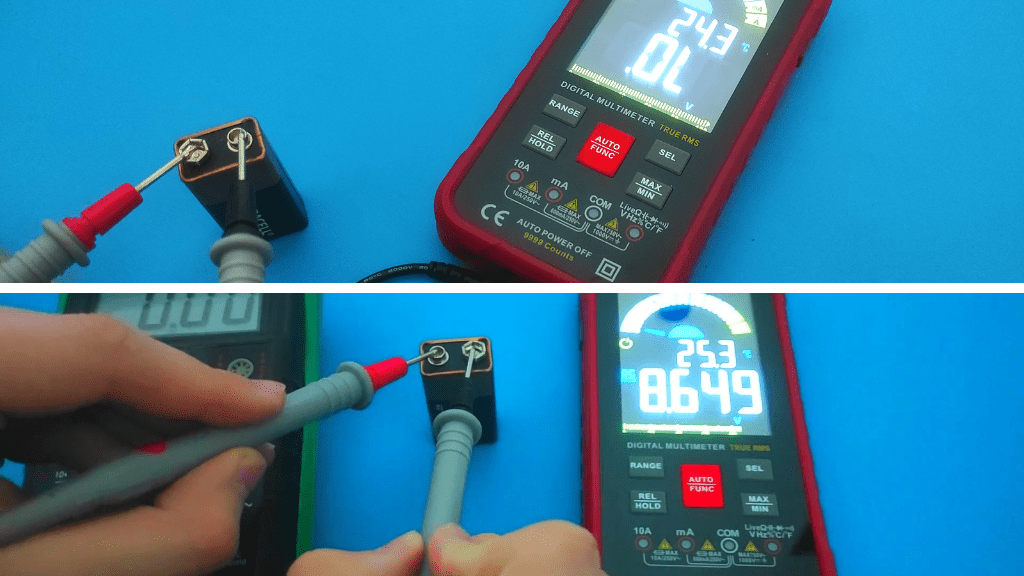
2. Continuity
This is the uninterrupted flow of electricity on a conductive path. A test on it fails if there is an break between two points in a circuit.
Using The Continuity Mode
For this mode, you simply turn the dial to the soundwave icon on the multimeter. Not all multimeters have this mode, sadly.
If your multimeter does, however, you may place the tip of the black probe on the tip of the red probe to ensure that the probes and multimeter are working fine.
You should hear a beep sound at this point.
What OL Means When Testing Continuity
Now, when there is an interruption in the circuit pathway, the meter screen displays OL, meaning that there’s an opening within the loop (hence, open loop).
For instance, when you use a multimeter to test a wire for faults, OL means there’s a problem with the conductive copper between the points where you place the negative and positive multimeter probes.
Using the water/hose analogy, when a water pipe is broken and water does not flow from one end of the pipe to the other end of the pipe, there’s an interruption of the path between these two points.
This means there’s no continuity and, when testing a circuit, the meter screen presents an Open Loop reading.
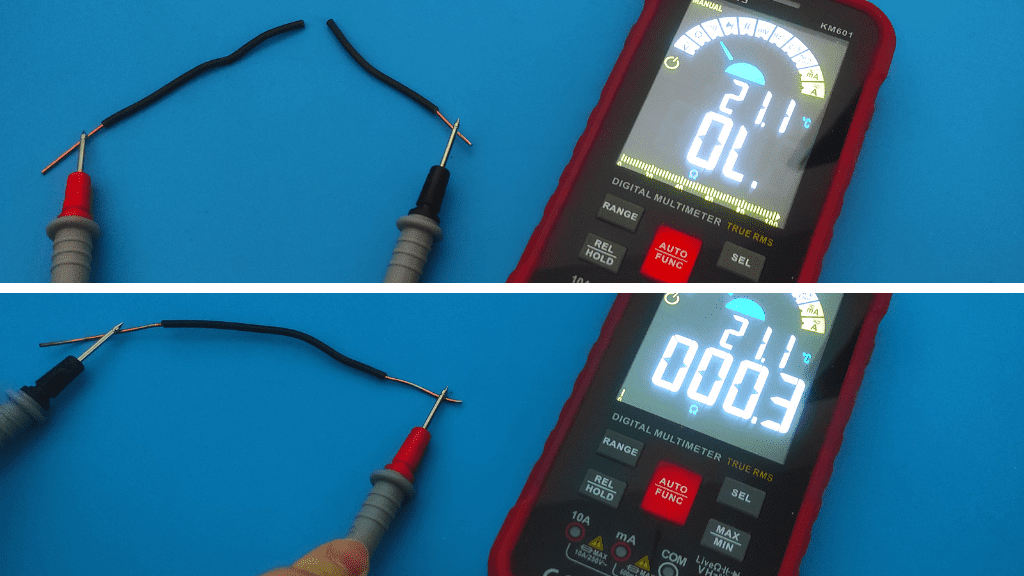
3. Resistance
Resistance is the opposition to the free flow of current within a circuit. The higher the resistance, the harder it is for current to flow from one point to another.
Zero (0) is the lowest ohm measurement you may get within a circuit.
Using the Resistance Mode
Now, when you measure resistance, you turn the multimeter dial to the “Ohms” setting represented by “Ω”.
Just like when you measure voltage, you also set your multimeter to the closest higher range.
For instance, if you want to measure the resistance of a copper wire expected to be 10 ohms, you set the multimeter to the 20 Ohms range.
If the measurement is expected to be 150 Ohms, you set the multimeter to the 200 Ohms range.
What OL Means When Testing Resistance
If the multimeter displays an OL reading, then there is infinite resistance between the two points you are testing.
An infinite resistance is an extremely high resistance, so high that current cannot go through.
There is no connection between the two multimeter probes and the multimeter thinks the conductive pathway has been interrupted. You then get “OL” on the multimeter’s screen.
We may use the water/hose analogy here. Water going from one end of a pipe to the other has low or zero resistance.
When the pipe is half-blocked, it has high resistance, but water still goes through to the other end. This is why the meter still presents a high reading.
Now, when the pipe is almost completely blocked or totally blocked, it has infinite resistance and water does not go through to the other end at all.
In a circuit, the meter reads this as OL. In some cases, the multimeter presents a “1” reading.
As you may have guessed, the resistance test is another accurate method of checking for an uninterrupted pathway within a circuit.
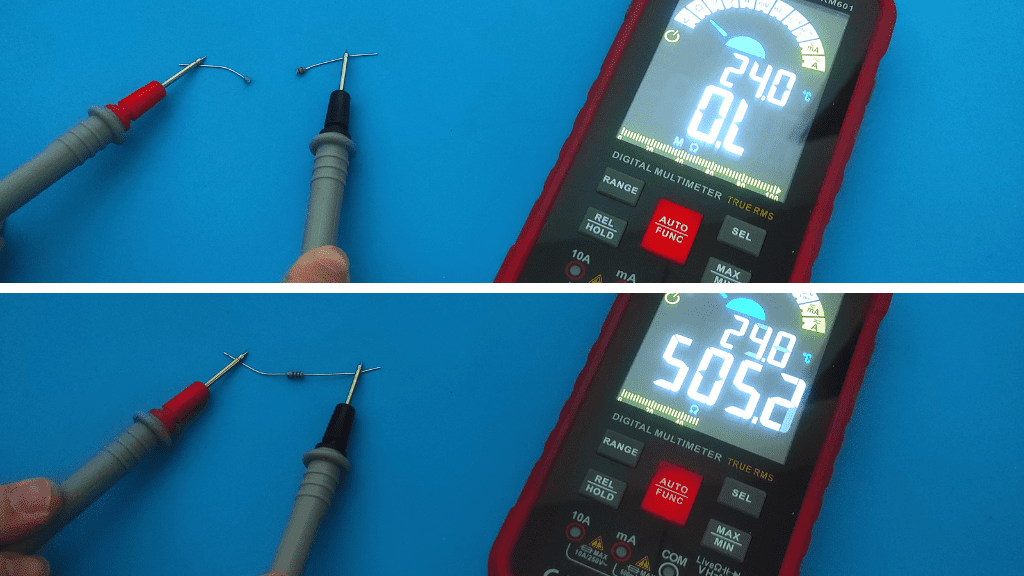
Possible Solutions For Multimeter OL Reading
Of course, when you get an “OL” reading from the multimeter, the first thought is that the device or component you are testing has a fault.
If you test the circuit of a copper wire, for instance, “OL” ordinarily means that the wire is broken at a point and needs to be replaced.
If you test the volt from a wall socket, “OL” means that it is overloaded and the source of current should be looked into.
Now, this isn’t always the accurate diagnosis. “OL” may be displayed due to problems with your multimeter settings or probes.
- Voltage: For volt measurements, when you get an “OL” reading, ensure that the multimeter is set to the right volt range.
For instance, if you want to measure a 240V socket, the multimeter will present you with an “OL” reading when you wrongly set the multimeter to the 200V limit.
Why? Well, because this is not the closest higher range and replacing the socket won’t be the right step.
Your solution will be to readjust the multimeter dial to the 600V limit, which is more appropriate.
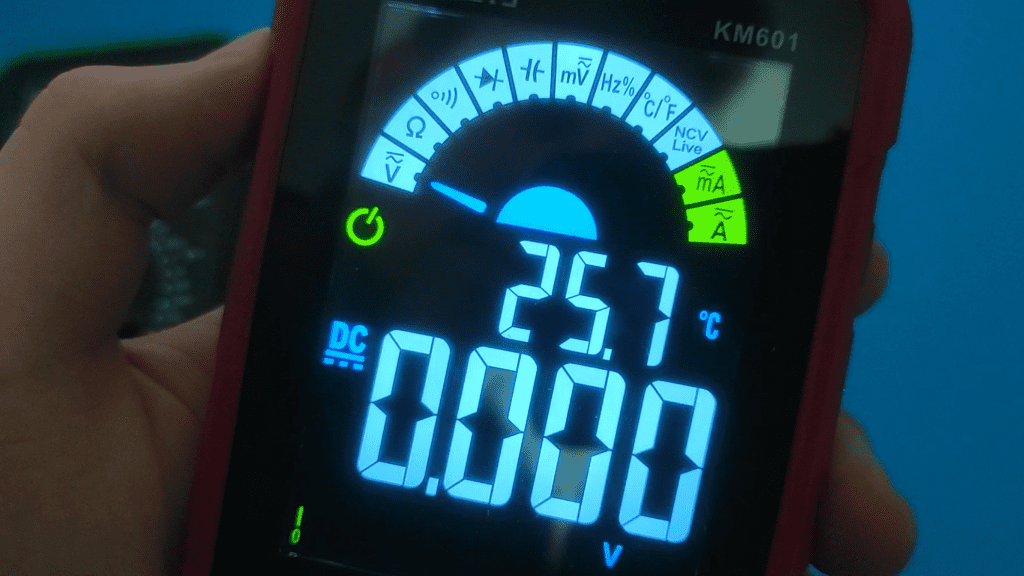
- Continuity: Here, your problem could be from the multimeter probes. Always ensure that the probes are clean and make contact with the terminals of the component you wish to test.
Remember OL will be displayed any time the multimeter probes don’t connect within the circuit.
This means bad multimeter lead placements or dirt on the tip of your leads will cause the meter screen to display OL.
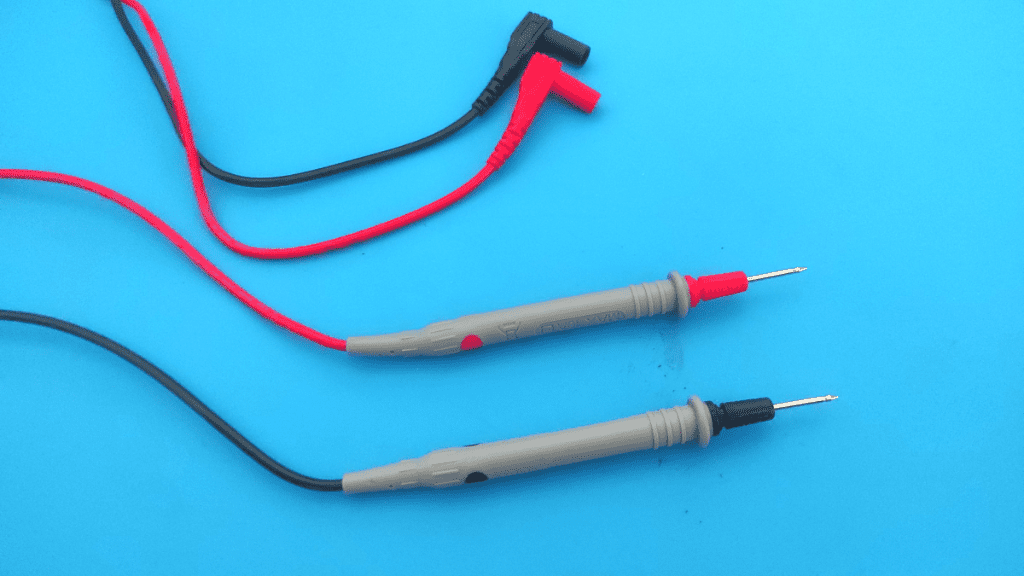
- Resistance: For resistance measurements, you combine all the solutions provided above. You check that the multimeter is set to the right range, and then you check that the probes are clean to ensure that dirt doesn’t block the circuit pathway. You also ensure the multimeter probes are placed correctly.
Note: The multimeter instantly displays an “OL” reading when you put it in the ohm setting. This is because the probes are not connected yet, so you don’t have to panic. However, if you place the tip of your black probe on the tip of your red probe and don’t get a beep or ohm reading close to zero (0), then your multimeter needs a check.
Video explanation about OL on the Multimeter
Frequently Asked Questions
Does OL Mean Low Resistance?
OL means very high or infinite resistance. The multimeter displays OL if the measured resistance exceeds the limit you set it to. This can be rectified by readjusting the meter to the appropriate range.
What Does 0.00 Ohms Mean?
Zero (0) Ohms indicates that there is no resistance within a circuit, meaning the circuit is closed, there is no short, and current can flow freely through it. This is good for conducting materials.

Author
Alex Klein is an electrical engineer with more than 15 years of expertise. He is the host of the Electro University YouTube channel, which has thousands of subscribers.
